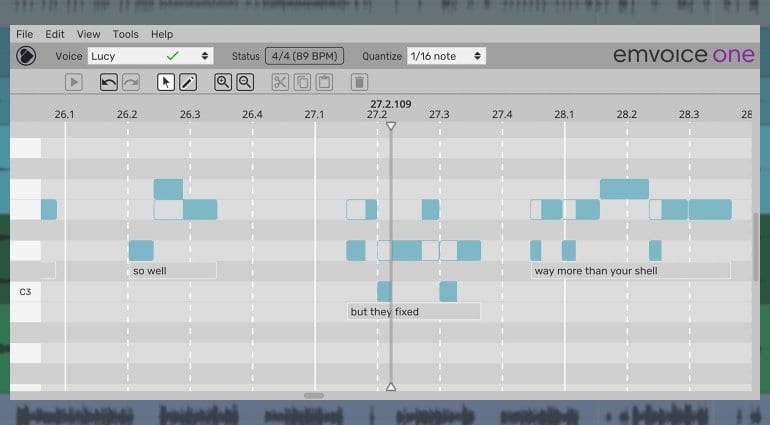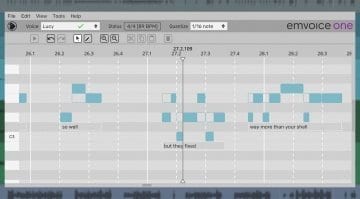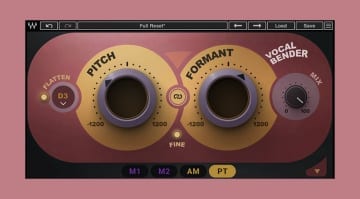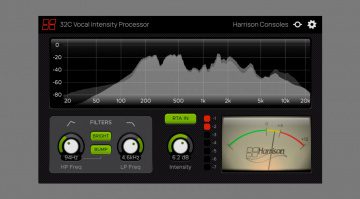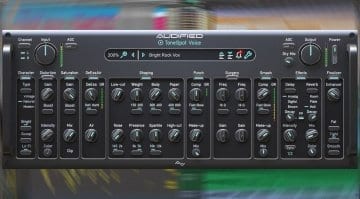Emvoice One: could this plug-in be your new lead singer?
Looking for a new lead singer? Check out Emvoice One. The makers say that the plug-in is “the world’s most realistic vocal synthesizer”. Rather than pre-recorded phrases or physical modelling, Emvoice uses real vocal samples broken down into individual phonemes. Is this the breakthrough in vocal synthesis that they claim?
Ah, singers! They’re late or they don’t show up at all, they’ve suddenly caught the flu or they demand that you transpose your track into a different key. Jokes aside – there are times when recording a real singer just isn’t an option. Like when you’re a bedroom producer experimenting with the layout of a track and just want to get a feel for different vocal lines. Or when you need some quick backing vocals, but you don’t have the time or money to record real people. Or when you’re the experimental type who embraces new technologies and wants to do things that a real singer can’t do.
Emvoice One vocal synthesizer
It’s these kinds of situations that the makers of Emvoice envision as the main use cases for their new plug-in. As of now, Emvoice One comes with one voice: Lucy. I assume that more voices will become available in the future. According to the developers, the plug-in uses samples of a real human voice, which have been broken down to the granular level. The process doesn’t involve synthesis or physical modeling, and unlike Yamaha’s Vocaloid, it doesn’t rely on pre-recorded phrases. Instead, the granular vocal bits represent individual phonemes at different pitches, which are then arranged and combined to create your vocal line.
One thing that should be noted is that for whatever reason, this process happens in the cloud. The cloud-based engine returns the complete vocal over the internet in real time, which means that your production machine must be hooked up to a fast internet connection at all times. I’m not sure why it wasn’t possible to implement local processing, as this could be a dealbreaker for some people who like to work offline.
- Typing lyrics · Source: Emvoice
- Using phonemes · Source: Emvoice
- Modifying words · Source: Emvoice
- Custom pronunciation · Source: Emvoice
- Selecting pronunciation · Source: Emvoice
Piano roll editing
That aside, Emvoice seems pretty powerful. Vocal lines are programmed in a piano roll style editor. As of now, it’s unfortunately not possible to record or import MIDI notes in the plug-in; you have to input every note individually. (Emvoice says that they’re working on enhanced functionality in this regard.) Once you’re done inputting notes, you can type the lyrics right into the editor window, and edit the pronunciation at the phoneme level. Custom pronunciations can be stored in a dictionary. Lucy sings in English, by the way, and commands a vocal range of about two and a half octaves. Emvoice One even generates breath sounds for added realism. You can also add embellishments such as vibrato and glissando, although the process still seems a bit cumbersome. A simpler, Melodyne-style method for adding and editing vibrato would be a welcome addition in a future update.
While it’s obvious from the demo tracks that Emvoice likely won’t replace your lead singer anytime soon, it does seem like a great tool for quickly trying out melodies and lyrics. But while it represents another step in the direction of believable vocal synthesis, it also still sounds almost comically like a computer. Which could be exactly what you’re looking for, depending on the style of music you make.
Price and compatibility
Emvoice One is available now for Windows and Mac computers as a VST and AU plug-in. There is no stand-alone version; it only works inside a host DAW. An AAX version is in development. The price for the plug-in and the first voice (Lucy) is USD 200 + tax.
More information
Video
You are currently viewing a placeholder content from YouTube. To access the actual content, click the button below. Please note that doing so will share data with third-party providers.
Sounds
https://soundcloud.com/emvoice/sets/songs-feat-lucy
